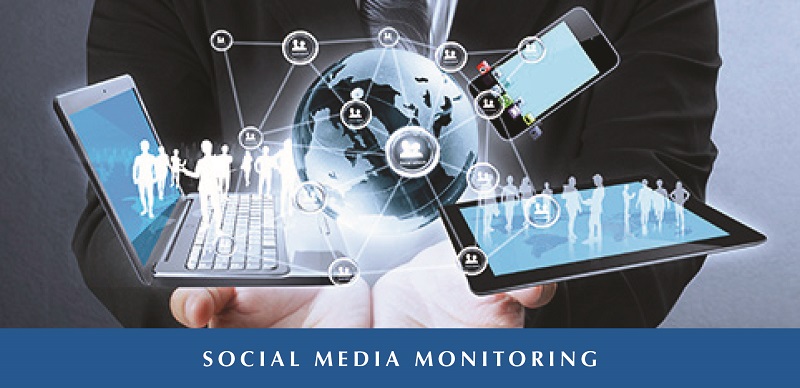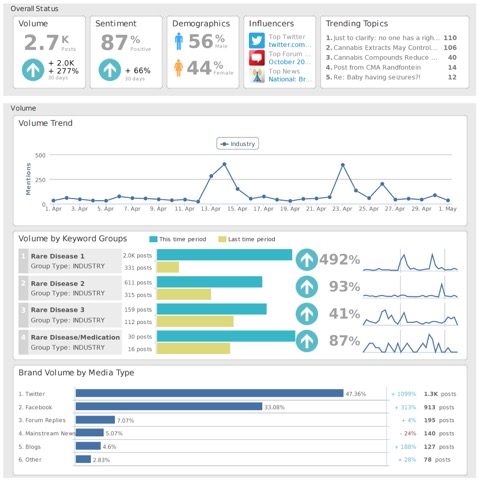
-
We Include patients and their caregivers when we convene disease experts to plan publications
- Example: We convened Working Groups for the rare diseases of infantile spasms (IS) and Lennox-Gastaut syndrome (LGS)
- The mother of a child with LGS presented to the LGS Working Group for 20 minutes about what she thought HCPs should know about LGS
- An IS Care Advocate presented her survey results from parents and caregivers to the IS Working Group
- Publications based on the Working Group deliberations appeared in Epilepsia, BMC Pediatrics, and Exceptional Parent magazine
- Several related position papers and state-of-care manuscripts are currently in review
- Example: We convened Working Groups for the rare diseases of infantile spasms (IS) and Lennox-Gastaut syndrome (LGS)
-
We listen to what patients are saying
- Example: We couple social media listening & monitoring (Figure) with scientific surveillance to create actionable insights & recommendations
- Social listening provides real-time needs assessment, in that we learn what patients and influencers are thinking, and what they need most, as soon as they share these thoughts
-
We provide social space for patients and caregivers to talk about the challenges of living with disease and discuss their ideas with others who are affected
- Example: We helped establish patient/caregiver resource portals for rare diseases, including www.HopefulCircle.org.
- We work with advocacy groups (eg, National Organization of Rare Diseases [NORD], Lennox-Gastaut Foundation, Child Neurology Foundation) to further awareness of rare diseases and provide resources for patients and their caregivers.
Figure. Patient/caregiver social listening - output for rare disease (April 1 to May 1, 2015).
Sources: Twitter, Facebook, disease-specific forums, mainstream news, blogs, and miscellaneous online sources. Note that we report on 1) the volume of talk surrounding an issue/topic and to what degree the volume is moving upward/downward; 2) the sentiment surrounding the talk (ie, how much positive or negative); 3) a gender breakdown of participants; 4) the top influencers, 5) related topics that are trending; 6) trending volume over time; 7) trending volume by keyword groups, and 8) trending volume by media type.

All the feedback obtained, whether through working groups or monitoring social media, serve as real-time needs assessments for potential incorporation into publications, development of educational materials, and refinement of communications.
We Can Help You Help Patients
At PharmaWrite we listen to patients and caregivers and strive to include their voices in our clients' medical and scientific communications. Our digital tools and platforms allow us to provide a real-time needs assessment and a way to identify stakeholders. We not only bring content to the patient but we also bring the patient to the content.
For more information on how we can help you help patients and caregivers, please contact us here.



